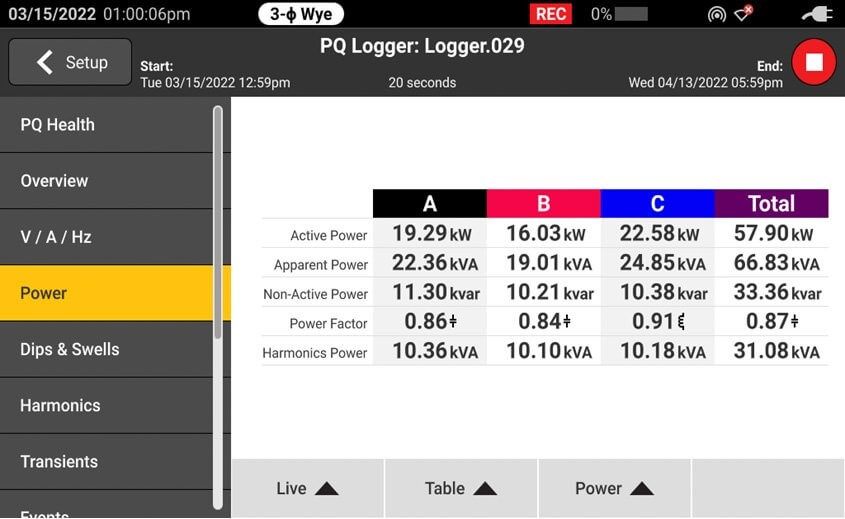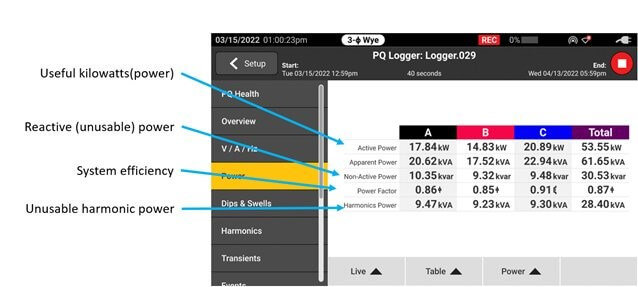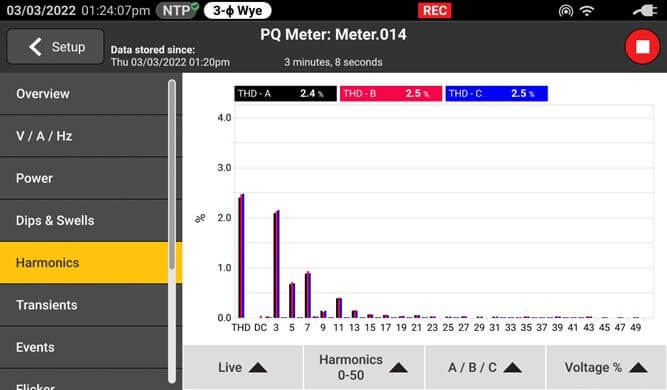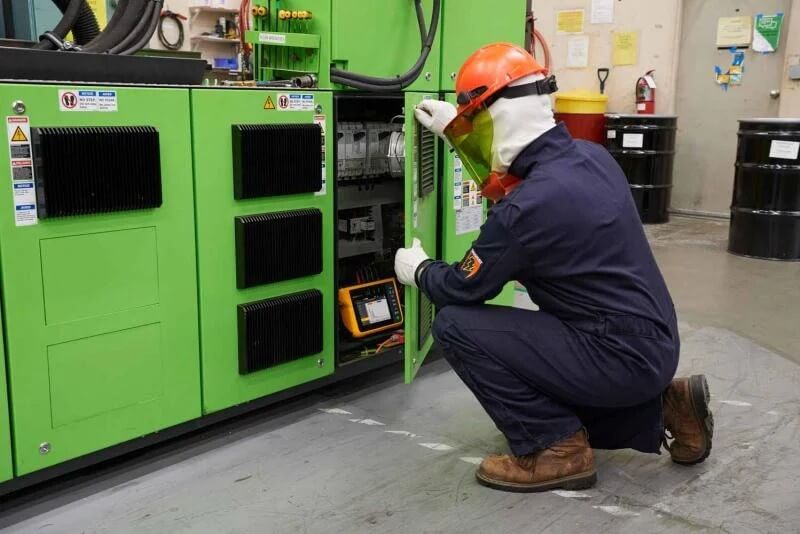Saving energy and minimizing energy waste is one of the most critical aspects of energy use. No matter what industry you work in, looking for energy savings means looking at your power consumption rates and developing a power quality management energy saving plan.
Table of Contents:-
Benchmarking Electrical Energy Consumption:-
The first step in developing a power quality management program is benchmarking your current electrical energy consumption across the facility. Through that initial survey, you can look for quick and easy solutions to start with, like areas that are typically closed on the weekends and can be shut down. Track areas that contribute to your energy usage outside of large assets like supplementary electrical heating, lighting being left on, and computers not being switched off.
Once you’ve identified and implemented those quick wins, continue with more detailed studies throughout the building or campus. Run load studies on assets throughout the area using the Fluke 1777 Three-Phase Power Quality Analyzer. These measurements can show where you could see significant energy-saving opportunities from switching some systems off during the night on non-operating times.
Advanced Power Quality Considerations:-

As current flows, some generated energy will inevitably become wasted as heat.
The next step in the process of reduced energy consumption is to look at where energy waste arises. One area to focus on is losses in conductors. As current flows through conductors, some of the energy generated will turn into wasted energy as heat. Figuring out how to level this issue goes back to the fundamental I2R equation indicating the power delivered. But this leaves 2 possible solutions, reduce the current flow (I) so there is less kW, or reduce the resistance (R). Both leave you with a problem:
- Lower current (I) and the load will not operate correctly
- Reduce resistance (R) can cost more because it requires the installation of copper or aluminum conductors
So, what is the best solution?
Consider the conductor sizing. Following the National Electric Code (NFPA 70 or NEC 100) gives a lot of guidance toward the size of a conductor, describing the ideal conductor size for almost any circumstance. The main consideration for conductor sizing is ensuring the safe operation of the conductors with the most appropriate insulation. This can depend on the length, cross-sectional area, and the anticipated current rating required. This can provide minimized energy losses, typically 2% or less, and an acceptable voltage drop in the conductor. Some additional possibilities would be installing higher efficiency loads. Consider checking to see if motors might be oversized for the current application.
Wasted Power:
These codes and guidelines are great when you’re putting in new work, but once cabling installation is completed and the loads are installed, it doesn’t always work out ideally. Over time, the equipment may change with additions or adjustments, moves, and age can all have a significant effect on waste energy. Key areas where energy waste may occur are related to your power quality: voltage regulation, harmonics, power factor and unbalanced loads.

Voltage Regulation:
Voltage regulation works to reduce energy consumption in loads that are voltage-dependent. It does this by reducing or controlling the voltage levels within the equipment manufacturer’s specifications to return energy savings. As more efficient loads are installed at a transformer, the voltage in the system may rise or be incorrectly controlled.
To catch voltage regulation issues, use a Fluke 1777 Power Quality Analyzer to look for transient voltages and voltage imbalance. Both issues can lead to failure, unplanned downtime, and expensive repairs.
Harmonics:
Harmonics distort the voltage and current so that the ideal sine wave for voltage is not maintained. One of the most recognized effects of harmonics in electrical systems is the excess heat they create in the conductors carrying them. This results in overheating in phase and neutral conductors, known as “triplen harmonics.”

The additional heat causes issues in cable runs, motor windings, and transformers. The overheating can cause significant damage or complete failure, either of which could lead to unplanned downtime and expensive repairs. To measure and diagnose harmonics, use a Fluke 1770 Series Three-Phase Power Quality Analyzer.
Unbalanced Load:
In the case of three-phase motors, unbalance degrades unit performance and shortens life span. Voltage unbalance at the motor stator terminals causes phase current unbalance far out of proportion to the voltage unbalance. Unbalanced currents, in turn, lead to torque pulsations, increased vibration and mechanical stresses, increased losses, and motor overheating. Each one of these effects consumes energy, now quantifiable in watts. To diagnose and measure unbalanced waste power, pick up a Fluke 1777 Three-Phase Power Quality Analyzer.
Benefits of Power Quality Studies:
Once power quality studies reveal areas where energy is being wasted, you can take steps to fix the issues:-
- Set up a preventive maintenance routine so you can continue to measure against your benchmark and catch issues as they arise.
- Install harmonic filters on loads that add to your facility’s harmonic distortion.
- Address the sources of unbalance. This may mean setting up a repair or replacement schedule for large motors with mechanical unbalance issues.
- Mitigate unbalanced load issues. In some cases, this may mean adjusting single-phase loads, so they are more equally distributed across the phases.
- Replace blown fuses where necessary. A blown fuse on a bank of three-phase power factor improvement capacitors could also cause the problem; simply replacing the fuse can resolve a major unbalance.
Power quality studies highlight a lot of what can be done to save energy, reduce energy losses due to issues throughout a facility, and lower energy costs. Power quality monitoring can show where the issues you’re experiencing are coming from and how to fix them.
Beyond the energy savings, power quality studies have been shown to lead to some additional benefits:-
- Discovering potential failure points in assets that can cause major disruption
- Found equipment malfunctions that can lead to cascading issues
- Came across improperly installed breakers prone to accidental tripping
Conclusion:-
With an advanced power quality analyzer and proper energy management, you can easily reduce your energy waste by 50-90%. In some cases, even more than that. Using these tools, along with a smart energy-saving plan you can save not just a few but tonnes of money too!
Sapphire Technologies is an authorized Fluke distributor in Bangalore, Karnataka. To know about the latest products and exclusive deals on fluke solutions, reach out to us now!
